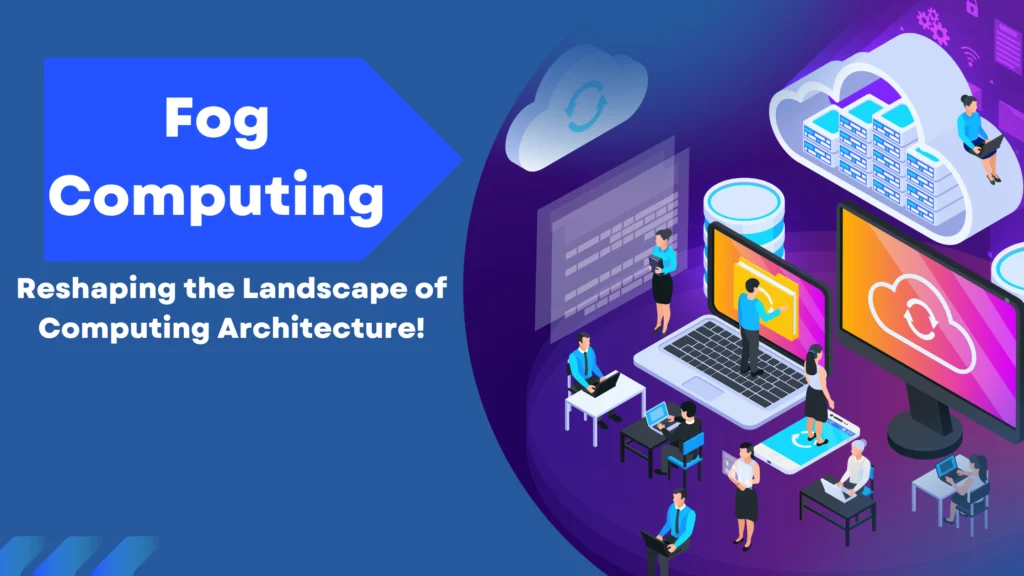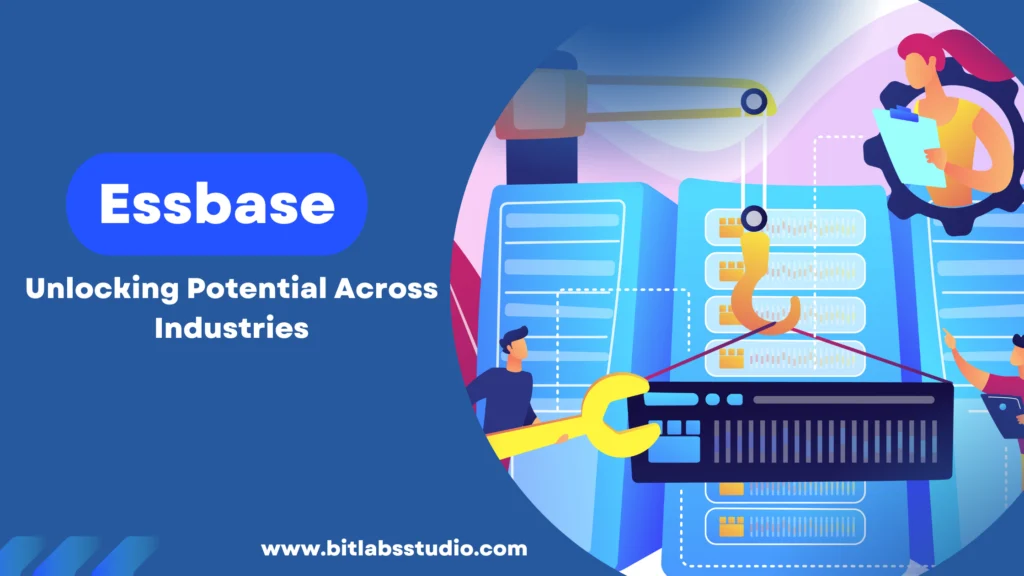Sending a business email, watching a YouTube video, participating in an online video conference meeting, or playing an audio recording game online all demand significant data flow. Such large data flow is necessary to oversee servers in data centers. Cloud computing uses distant data processing and ample storage systems to create online programs we use daily. However, we must get aware of alternative decentralized cloud computing solutions. The popularity of fog computing technology is skyrocketing.
According to specialists in fog technology, the worldwide fog technology industry will be worth almost $2.3 billion by the end of 2032.
The technology fog had a market value of $196.7 million by the conclusion of 2022. Rapid advancements in technological advances have already enabled vendors and factories to include microchips and devices. It will increase the reliability and performance of various goods and services, including household appliances, motor vehicles, and agricultural gear.
Continue reading to find out how the fog network is transforming the globe and what the years to come will look like.
What is Fog Computing?
It is a network of decentralized computers that places data, processing, storage, and applications anywhere between the data source and the cloud. Fog technology, like edge computing, brings the benefits and capability of the cloud farther from where data is producing and acting on. Many people use the words fog cloud technology computing and edge computing similarly since both entail moving intellect and processing closer to the data source.
The fog metaphor derives from the meteorological word meaning a cloud near the ground, as fog accumulates on the network’s edge.
Why We Use Fog Technology?
There are several uses for fog technology computing. Traffic management is becoming an increasingly important issue for fog networks. Cities may locate computer facilities near cell towers because detectors, like those used to measure traffic, are typically linked to wireless networks. These processing capabilities enable real-time traffic data analysis, permitting traffic signals to respond to changing conditions.
In self-driving automobiles, this core concept makes use of fog technology. Self-driving automobiles act as edge devices because of their huge onboard computing capabilities. These vehicles must be able to absorb input from several sensors, analyze real-time data, and react appropriately.
Some towns are considering how a self-driving car may operate utilizing the same computer power that regulates traffic lights. For example, an automobile of this sort may serve as an edge device, transmitting real-time information to an organization that collects traffic data from other sources. The basic concept of computing infrastructure can use this data to regulate highway signals more effectively.
Also Read: Tactical Planning: A Strategy for Success
Why We Use Fog Computing in IoT?
IoT is a linked network of devices, sensors, and software parts that share information and data. The power of the Internet of Things stems from its capacity to gather and analyze large amounts of data from various sources. This information can boost efficiency, enhance operations, and make more informed decisions.
In the Internet of Things, fog technology is a decentralized computing approach that moves processing and data storage closer to the network’s edge. To put it another way, fog cloud technology shifts dealing out power and data storage absent from centralized server centers and into neighborhood networks where IoT devices reside.
Advantages of Fog Computing
The advantages of fog are varied and advantageous to specialists. The application of fog data technology can provide several benefits. Fog technology, like any other technical advancement, has benefits and drawbacks. The following represent a few of the fog benefits you should be aware of:
- Bandwidth Administration: Fog networking technology reduces the quantity of data transmitted to the cloud, reducing bandwidth utilization and related costs.
- Network-Independent: Unlike edge computing, a fog network frequently delivers processing horsepower at the local network level instead of at the product level. There is a connection in the network that is part of the fog processing architecture.
- Reduce latency: Placing evaluation near the information source decreases the likelihood of system failures, manufacturing line disruptions, and other critical issues. The ability to do real-time data analysis means faster warnings, fewer dangers for customers, and less downtime.
- Reduce broadband network use: Many statistical analysis activities, even critical ones, may not require cloud-based data processing and storage scalability. Meanwhile, linked devices generate a growing amount of data for research. The use of fog data eliminates the need to transfer the majority of this vast data, freeing up assets for other essential operations.
- Lower operating costs: Lower operating costs arise from evaluating as much data locally as possible while maintaining network capacity. It has the exact resemblance to fog computing in cloud computing.
Four Types of Fog Computing
Fog technology computing refers to technology that pushes cloud computing and associated amenities to the network’s edge. It enables the relocation of data, programs, and other resources closer to, or even on top of, end users.
The four significant categories of fog technology computing are:
- Sensors, routers, switches, and other low-powered gear play a role in device-level fog computing. It can collect data from these gadgets and send it to the cloud for analysis.
- Edge-level fog technology computing occurs on servers or devices at the network’s edge. These devices may analyze data before sending it to the cloud.
- Gateway-level fog technology is implemented on devices that bridge the physical edge and the cloud. These devices may regulate traffic and guarantee that only pertinent data is delivered to the cloud.
- Cloud-based servers or modules power cloud-level fog technology computing. These devices may process data before sending it to end users.
Different Applications of Fog Computing
Here are the different applications of fog technology computing you must know in 2023:
- Healthcare
Fog technology computing might prove helpful in healthcare, where immediate analysis and event response are critical. Edge AI applications such as real-time analysis of images, early illness identification, and tailored therapy are also supported by fog cloud computing technology in healthcare. Remote tracking of patients, wearable gadgets, telemedicine, and ambulatory healthcare are all made possible by it. One approach proposed for identifying, forecasting, and preventing stroke sufferers from falling is technology fog computing. A fog-based intelligent healthcare system with low latency, mobility aid, location, and respect for privacy is presented.
- Smart Homes
Due to the fast development of the Internet of Things, many sensors and electronic devices are now connected at home. However, combining items from many vendors might be difficult. Some activities that need a lot of processing and storage, such as live video analytics, are impracticable due to hardware limits. Fog computing serves to connect all devices to a single platform. For the sake of this demonstration, let us use a home security app. Smart locks, video/audio microphones, and other sensor monitors (including light sensors, occupancy gauges, and motion sensors, among others) are commonly used security sensors. These security devices are difficult to integrate even if they come from the same manufacturer.
- Augmented Reality, Games, And Cognitive Systems
You can frequently use fog technology computing in augmented reality applications that are latency-sensitive. The EEG Tractor Beam enhanced global online mental-computer interface game, for example, continually classifies mental states in real-time on fog devices and then adjusts classifier models on remote servers based on data collected via electroencephalogram sensors.
Individuals with decreased mental acuity can utilize a wearable cognitive-assistance device that uses Google Glass to do several activities, such as memorizing the names of people they meet but can’t recall. Devices in this application interface with the cloud to perform exercises that may wait, such as logging and trouble reporting.
- Services For Intelligent Utility
Fog technology computing may be used with intelligent utility services8, which attempt to enhance energy generation, distribution, and invoicing. In these cases, edge devices can give more detailed energy usage statistics to consumers’ mobile devices than regular innovative utility services (for example, hourly and weekly readings instead of monthly measures). These cutting-edge technologies may also evaluate daily energy expenses, propose the most advantageous power source at any given time, and indicate when to utilize household equipment to reduce utility consumption.
FAQs (Frequently Asked Questions)
Q#1: What Is Fog Vs Cloud Vs Edge?
The data is created and gathered at the edge layer while it undergoes analysis and processing at the fog layer. The cloud layer supplies the fog layer with additional processing resources and storage capacity.
Q#2: Is Fog Computing The Same As Dew Computing?
No, Fog Computing and Dew Computing aren’t interchangeable terms. While both strive to expand cloud computing ideas, Fog technology computing emphasizes data processing closer to the edge. In contrast, Dew computing stresses decentralized resource sharing and integrating edge, fog, and cloud computing resources but with different methodologies and purposes.
Q#3: Is Fog Computing Difficult?
It is challenging to schedule work between the host and fog nodes, as well as between fog nodes and the cloud. Data management becomes onerous because data transport needs encryption-decryption, which releases data, in addition to data storage and computation.
Conclusion
Fog computing is a cloud partner that manages massive amounts of data generated regularly by Internet of Things (IoT) technology. As previously stated, moving data processing closer to the source of information solves the problems of rising data volume, speed, and diversity. It gives businesses more control over their client information.
Fog data technology also improves awareness and responsiveness to incidents. That means there are no longer costly connection bandwidth concerns in the Internet of Things answers, and there will no need to dump significant volumes of data onto the physical components of the leading network. Comment below if you have any queries about fog technology. Our professional team will assist you accordingly.




